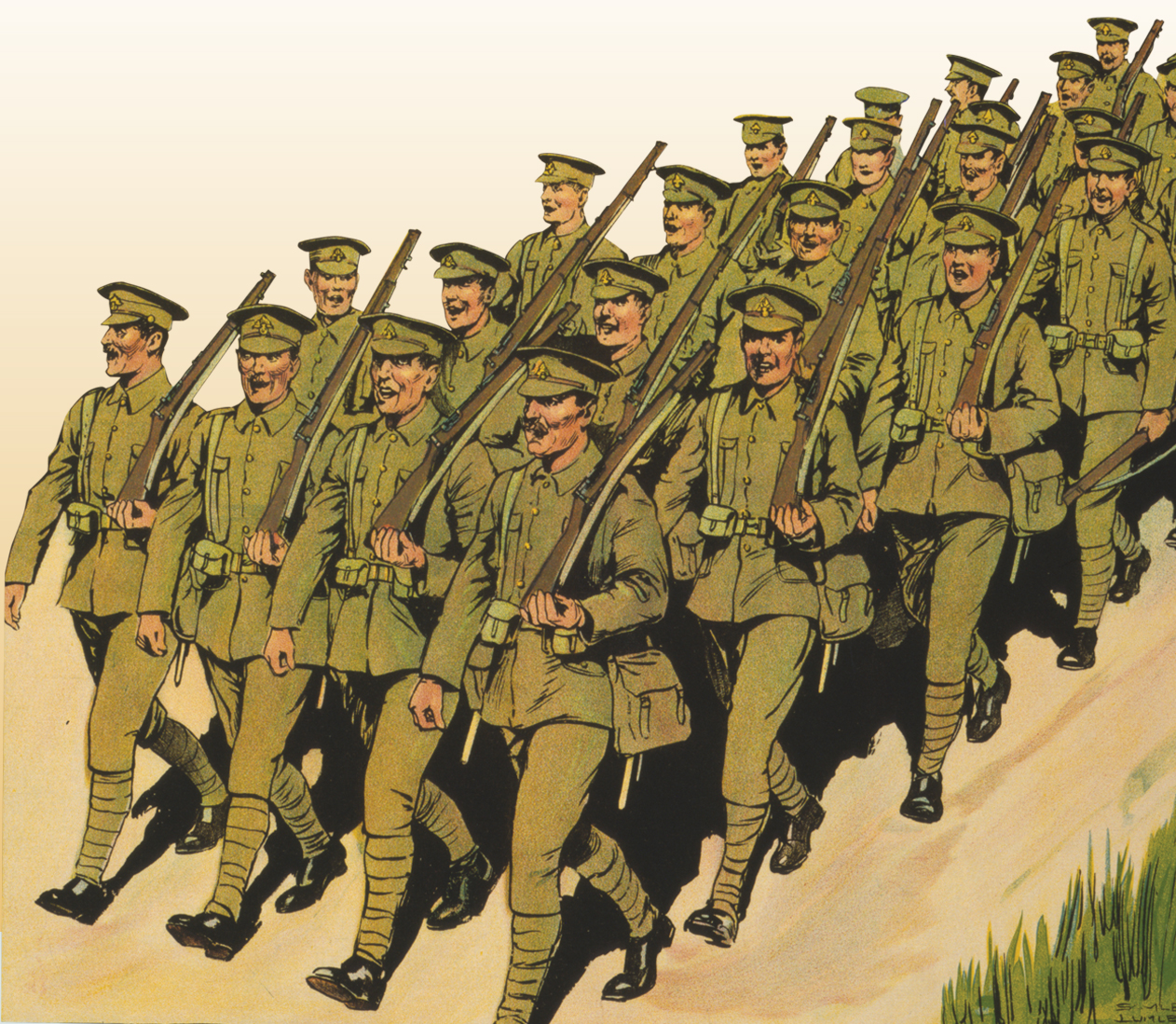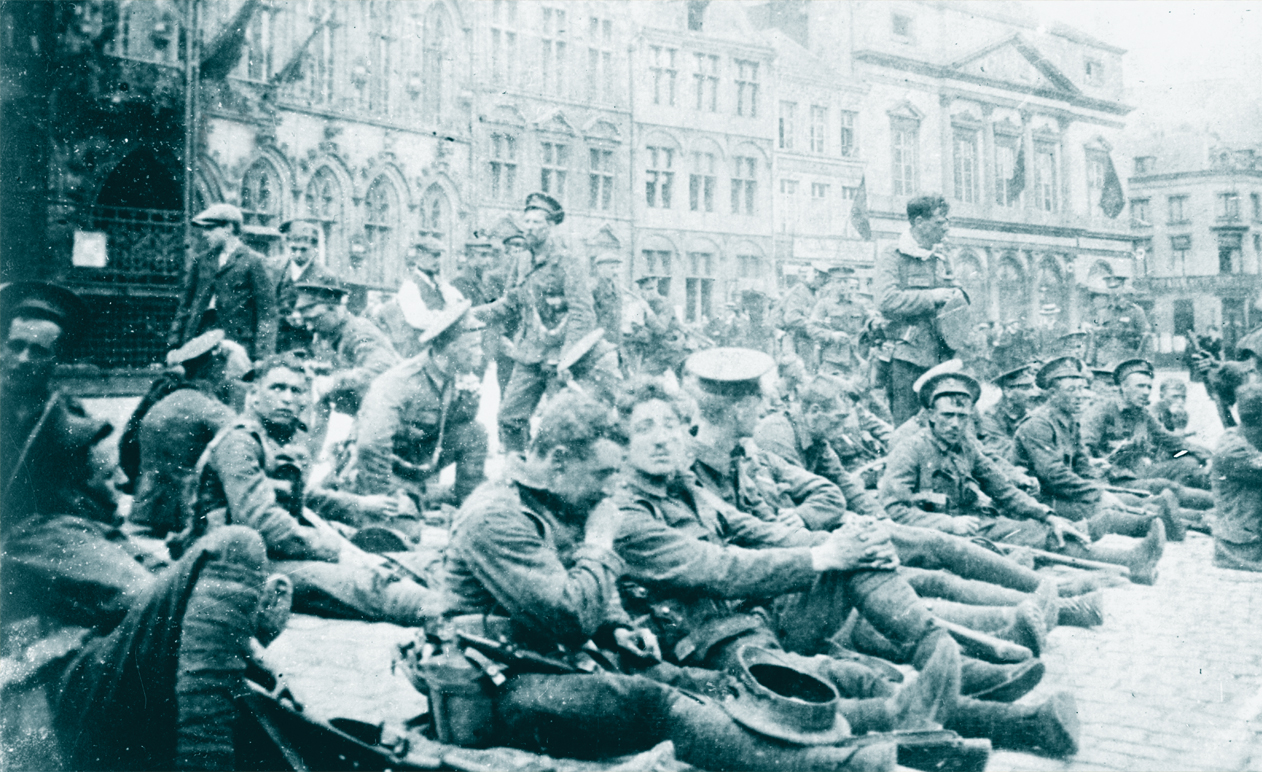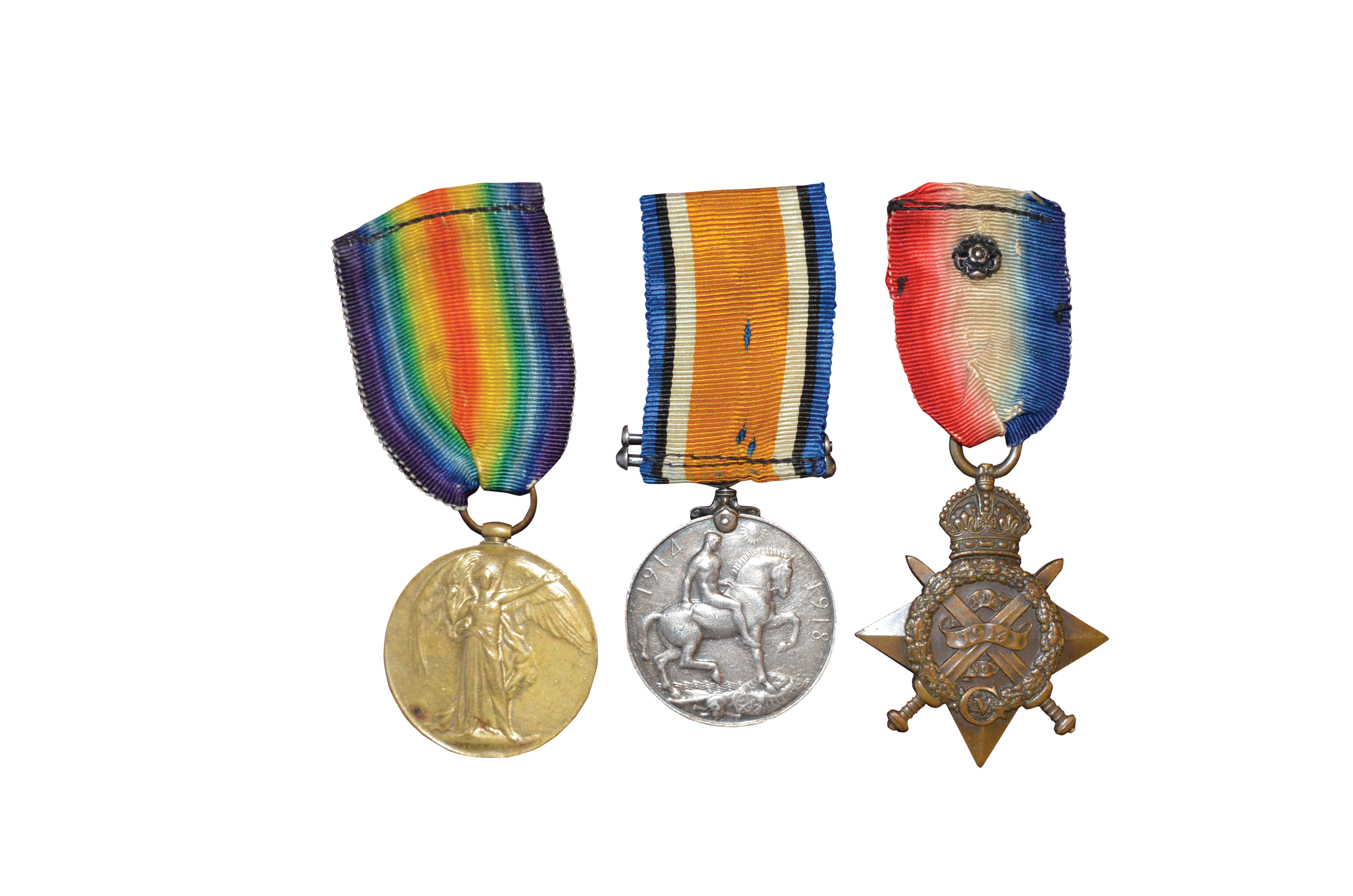It all started with a random tweet. My first inclination had been to ignore it because rule No. 1 on Twitter, as a journalist, is to avoid being baited personally.
The sender, however, did not appear to be an aggrieved reader, nor a partisan hack with an axe to grind. She also didn’t appear crazy, something which surprisingly comes through loud and clear even with only 140 characters. What followed was a long, direct message exchange that opened a window on the past; a portion of family history my grandmother had skillfully edited out of our collective consciousness.
Tapping the iPhone keys on that long, cold December night, it quickly became apparent I was connected with family in Britain I did not know existed; smart, warm, compassionate people whom it’s become a privilege to know. They were the painful secret of my grandmother, Caroline Emily Watt (Thomas), revealing themselves 14 years after her death, and nine months after her daughter, my mother, passed away.
These unexpected cousins were the product of my great-grandfather’s second marriage after the First World War. Being an only child, I had no one to ask why they had been kept hidden. To this day I have no idea whether my mother—also an only child—lived her whole life not knowing of their existence.
What my grandmother told me about my great-grandfather, Edward Frederick Thomas, barely filled half a page. He had been a British soldier, captured by the Germans in the Great War. Not long after he was he repatriated, her mother—his wife of 15 years—ran away, eventually settling down secretly in Canada where she hid from her ex-husband for the rest of his life.
My grandmother, left behind with her sister in London, characterized her father as an angry man whom she barely knew. She eventually followed her mother—Marian Thomas—to the “colonies” in 1929.
It wasn’t until the errant tweet and the subsequent journey to discover who Edward Frederick Thomas was that I came to fully appreciate how the great calamity that was the Great War shaped not only him, but me.
As the senior defence writer for The Canadian Press (CP)—and having spent 15 months in Afghanistan—I had my own incomplete understanding on how war can ruin good people.
It became my starting point. That; a few scraps of paper, and even fewer anecdotes. A labyrinth of books, diaries, maps and archives lay ahead in this strange pilgrimage.
“He was captured early in the morning in a forest,” my grandmother said of Thomas’s war service. “He was shaving and had a mirror in the tree when he saw the Germans coming at them. They were brutes. A guard in the (prisoner of war) camp knocked his front teeth out with a rifle butt.”
It was the thinnest of threads on which to pull. My cousins, whom I met in London in the fall of 2014, had a few more factual strands: his regiment, service number, the battle in which he might have been taken and the German camp where he was held captive.

Recruits Required: The Royal Fusiliers are depicted marching on a recruiting poster. [Library of Congress]
Edward Frederick Thomas was 31 years old when he went to war—old by the standards of the time. Married for nine years with two daughters, he was a marble mason, like his father. It was a respectable, self-taught trade for a young man from east London. It wasn’t steady work, and he alternated his occupation between marble mason and soldier.
He was, by all accounts, a reservist and most likely belonged to the British Army’s Special Reserve, which was a form of part-time soldiering that required three to four weeks training per year and paid a few shillings per week. At the onset of war, he belonged to the 4th Battalion Royal Fusiliers, based at Parkhurst Barracks on the Isle of Wight.
The battalion stepped on to French soil on Aug. 13, 1914, at Le Havre. They marched along the quay to the thunderous applause of locals and French soldiers.
“The Fusiliers began to whistle the ‘Marseillaise’ and that was followed by ‘Hold Your Hand Out You Naughty Boy’ which the French mistook for the British national anthem because they respectfully removed their hats,” said the regiment’s official history, which I uncovered at the Imperial War Museum.
Every account of the summer of 1914 talks of beautiful, bright and warm days, as though history was coming to an end.
The British Expeditionary Force (BEF), roughly 70,000 strong, was headed to the rescue of Belgium, whose violated neutrality had dragged England into war with Germany. They had nicknamed themselves the “Old Contemptibles,” after Kaiser Wilhelm reportedly described them as a “contemptible little army.”
The BEF slipped on to the left of the French Fifth Army and by Aug. 22, the 9th Brigade of the 3rd British Division had arrived at Mons, a small, industrial town in the heart of what was at the time rich coal-mining country. The intention of Field Marshal Sir John French was to hold the line of the Condé—Mons—Charleroi Canal for 24 hours and then continue the march towards the German 1st Army.

Before battle: Members of the Royal Fusiliers rest in the Grand Place in Mons, Belgium, on Aug. 22, 1914. [IWM/Q70071]
The Fusiliers began scratching out makeshift trenches and firing positions in Nimy, just north of Mons, at nightfall.
Over the next few weeks, the battalion war diary, handwritten on faded three-hole-punched paper, alternated between antiseptic and horrific. The entry on the eve of the battle may have seemed banal and perfunctory in the moment, but read with the hindsight of history, it is haunting.
“Took up an outpost guarding crossing over the canal,” wrote the headquarters junior officer in charge of the battalion war diary. “Had orders to hold on to the position as long as possible.”
Reading it was—for me—one of those significant, slow-moving revelations. My great-grandfather was present at the very first battle fought by the British Army in the Great War. Not only that, he was with the regiment that was at the tip of the tip of the spear.
Looking for diaries of the fighting, I was left astounded by the dearth of such accounts until a more historically seasoned colleague of mine at CP pointed out that being an “Old Contemptible” was to be part of a very exclusive fraternity. By the end of the First Battle of Ypres in early November, the vast majority of the initial, professional army that went into the field had been wiped out—dead, wounded or captured.
The numbers for the 4th Bn. were staggering. In the space of four months, it lost over 50 officers and 1,900 other ranks, including my great-grandfather. There were precious few left to tell the story.

For service: The war medals of Edward Frederick Thomas, including his 1914 Star (right). [Courtesy of Murray Brewster]
Sunday, Aug. 23, 1914, dawned clear, but with patches of mist hanging over the glass-like canal. It was mostly still. The people of Mons had been happy to see the British and showered troops with food—fresh bread, fruit and ale, the previous day. Church bells rang and townspeople dressed in their Sunday best went to morning mass.
Great, steaming slag heaps—a by-product of the coal industry—dotted the landscape. They were too hot to stand on—something that complicated the makeshift defences. This was poor defensive terrain. The troops were stitched into the urban and industrial landscape, not out in the open, or the forests, the way they were accustomed.
Nimy was at a bend in the canal and formed a vital lynchpin in the defensive line. The troops were spread out guarding bridges on the eastern and southern sides with outposts sprinkled on the opposite bank to warn of the approach of the Kaiser’s army.
Reconnaissance for both sides was largely carried out by the cavalry. The first shots of the war, for Britain, had been fired the afternoon before the Battle of Mons by a member of the 4th Royal Irish Dragoon Guards. The man who fired first—strangely enough—was named Edward Thomas, a corporal who went on to fight and survive the entire war.
My great-grandfather, however, was with Z (now known as D) Company at Lock 6 and the Ghlin-Mons railway bridge under Captain Arthur Byng. Their main position had been carved out on the opposite bank of the narrow canal. The bridge had been blocked by what official accounts described as the “ingenious” upending of cable drums.
The Fusiliers were exhausted from digging by sunrise and in the pre-dawn umbra they’d heard the enemy moving around in the forests just beyond the town.
Just after first light, a German cavalry patrol charged up the Nimy Road towards a railway bridge defended by Y (now known as C) Company. The Fusiliers let loose with volley, taking out four of the six men.
The entire IV German Army Corps was on the move and, by 9 o’clock, the bridges were under a rain of shellfire.
An unending grey tide began to swell on the opposite bank and poured down roads and open fields towards them. The “feldgrau” of the 84th Infantry Regiment approached the bridges in orderly columns and the more experienced British, some of whom had fought in South Africa, could not believe their eyes. As had been drilled into them during the pre-war years, the Fusiliers opened “rapid fire” with their .303 Lee Enfield rifles. The leading German echelons seemed to melt away.
Lieutenant Maurice Dease, who commanded Y Company’s machine-gun section, had placed his two guns on the south side of the railway bridge in two sandbagged emplacements. They laid down deadly enfilade fire, but they soon came under fire themselves. The crews were repeatedly knocked out as the cool daylight turned into a heavy, humid summer morning.
Dease went back and forth several times to keep the guns in action and was hit three times before being mortally wounded. About half way through the morning, both machine-gun emplacements stopped firing and Private Sidney “Frank” Godley stepped forward to take over.
Through much of the chaos, the only thing my great-grandfather’s company could do was watch helplessly as the main German blow had fallen on Y Company. But enemy artillery soon began ranging the length of the canal and periodic shrapnel bursts meant that Z Company had to that point “suffered little,” according to the official campaign history.
Shortly after noon, Colonel Norman McMahon, the veritable commander of the 4th Bn., ordered the withdrawal. The Germans had managed to breach one of the swing bridges near Y Company and Godley—in his machine-gun position—had only been firing a short time when it was knocked out permanently and he fell into the hands of the enemy.
Both Dease and Godley were awarded the Victoria Cross, the first recipients of the Great War. Of the 150 casualties suffered by the battalion on Aug. 23, 75 belonged to Y Company.
The BEF briefly stood its ground at Le Cateau two days later, but for the most part McMahon’s order signalled the beginning of the great retreat from Mons. Once underway, it did not stop until the Marne.
Mons was, without question, a brutal introduction to war. For reservists, like Thomas, it was even more horrifying when you consider that less than a month before, they had been civilians, with routine jobs and families in London.
While it was possible to stitch together an account of events on Aug. 23, the battalion war diary, the official history, the few remaining archival interviews with survivors were silent about Aug. 24, the date in which I was most interested. According to Red Cross records, Thomas was captured on that date.
Using old maps and diaries belonging to the corps commander, Lieutenant-General Horace Smith-Dorrien, I was able to follow the retreat of the 4th Bn. by tracing the movements of the 9th Bde. to which the Fusiliers were attached. They had withdrawn from the canal line through Mons and assembled in the middle of the night on the grounds of the town hospital.
At daybreak, the brigade found itself in the vicinity of Frameries, a village to the south of Mons. The Germans opened up an intense artillery barrage at 5:15 a.m., followed by swarms of troops.
“The (British) 109th Battery supported the 9th Bde. with a heavy fire and all the German attacks were repelled with heavy losses inflicted by infantry rifle and machine-gun fire and the artillery barrage. This success enabled the 9th Bde. to fall back through Frameries in good order at around 9 a.m. and begin its march to Sars la Bruyere.”
Somewhere in that bloody melee, my great-grandfather’s life and the lives of his family were irrevocably changed.
The records were silent on the fate of Thomas until October 1914, when the Red Cross in Geneva reported that German authorities had registered “Private E. Thomas, No. 8661 of the 4th (Battalion) Royal Fusiliers” as a prisoner of war at the Doeberitz Camp, near Berlin.
Upon arrival, the prisoners were stripped of anything personal or comforting, letters, photos and notebooks. Each of them wore summer uniforms and were ill-prepared for the harsh German winters that would follow.
A Times of London correspondent was there to witness the first wave. “At Doeberitz, the prisoners occupy five enormous tents surrounded by a wire fence,” said a Sept. 4, 1914, story.
“The men sharpened their spoons on stones to help them divide their daily 1.5 (kilogram) loaves of bread which, along with soup and coffee became their staple diet for the next few months,” read one account written by former PoW.
The diet created serious health problems and before long men collapsed from malnutrition and dysentery.
By the time the Russians arrived in November, the camp “had become infested with vermin. Men began to suffer badly from rashes, which some scratched until they were raw with red, seeping sores.”
There were no showers or baths and only two taps available for 4,000 prisoners. The ration of bread was soon reduced from one-half to one-third of a loaf per man, which led men to turn on one another.
That was life for my great-grandfather for more than four years. According to Red Cross records, he was repatriated to England in January 1919.
Returning soldiers had to fight for jobs. Personally, he faced the added stigma of having been captured with all the innuendo that entailed. Every indication was that he drifted from job to job for the rest of his life and never even applied for his 1914 Star, often called the Mons Star, until the mid-1930s.
Perhaps, like my friends from Afghanistan, he just wanted to fold up his wartime terror and stuff it in the back of a drawer somewhere.
He blamed his poor health on being “gassed in the trenches,” my cousins said. Gas not having been introduced until 1915; it was one of those little white lies he told to keep the morbidly curious and busybodies at bay. But his young children—born after the war—believed it, and took the account as gospel until my cousins started digging through the records decades later.
More than personal shame, Thomas was forced to contend with a world he didn’t recognize. The Edwardian era, with its manners and social mores, had been swept away. Women, including his now-estranged wife, were allowed to vote. She had worked in the factories during the war and tasted independence. It was rumoured she had taken up with someone else during their long separation.
Whether it was a newfound self-sufficiency, another man, or living with the traumatized shell of the man she once knew that drove her away is unclear.
My grandmother told me Thomas walked around London with a pocket knife for years afterward and planned to kill Marian.
Through my childhood eyes, he was a figure to be feared. It is a mystery whether my grandmother knew precisely how much he went through. In those days, they didn’t talk about it, and I often wonder if there would have been any room in her heart for pity, instead of shame and fear.
Advertisement






















